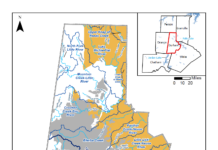The enactment of the Clean Water Act 50 years ago introduced an ambitious program to eliminate pollutant discharges from point sources. While stormwater point sources were not initially regulated as part of the National Pollutant Discharge Elimination System (NPDES) program, the U.S. Environmental Protection Agency (EPA) eventually expanded nationwide permitting to cover them, including discharges from construction activities. By regulating construction stormwater, EPA and state permitting programs would target a pollutant source that was acknowledged to be a major cause of water pollution since the mid-1980s.
Starting up a nationwide permit program for construction sites presented some challenges. EPA needed to develop an approach that would work for the many thousands of construction projects that would be occurring at any one time across the country. EPA’s 1990 Phase I and 1999 Phase II stormwater rules would require permitting of an estimated 84,000 individual projects per year. This called for a system capable of processing and permitting a large number of sites. Recognizing that handling paper applications would overwhelm permitting offices, EPA and the states adopted electronic systems that were easy to use and gave government agencies the ability to process and manage large numbers of requests quickly.
Another challenge was that traditional NPDES permits that require in-depth permit application reviews and the development of site-specific permit conditions would not work for regulating construction sites. Permitting authorities endorsed using the general permit option under the regulations. This approach was intended for sources like construction sites that share similarities in the types of pollutants being discharged and the controls necessary to minimize their release into the environment.
Permitting authorities also faced the challenge of developing permit requirements for a type of discharge that was different than the typical industrial point source. Permit requirements for most point sources include effluent limits that are federally established for industrial discharges that share the characteristics of having predictable wastewater flow rates and that can be treated by technologies with well-studied rates of pollutant removal. By comparison, permits for construction stormwater would need to account for highly variable discharges that are influenced by many factors including differing precipitation patterns, hydrology, soils, etc.
Basic erosion and sediment control practices (e.g., preserving stream buffers, installing perimeter controls, stabilizing disturbed soils) were well understood to minimize the discharge of sediment from land-disturbing activities. Such practices had been implemented through local and state building ordinances, and they also gave permitting authorities a source of potential requirements that could be included in the new construction stormwater permits. The reliance on erosion and sediment control practices in permits was made official in 2009 when EPA issued its federal effluent limitations for the construction and development industry (the “C&D rule”), which required all construction stormwater permits to minimize pollutant discharges through implementation of these same types of practices. The C&D rule provided flexibility to permitting authorities on the specific control requirements but also defined certain minimum conditions, such as the requirement to stabilize soils immediately if construction will stop for more than 14 days.
Requiring implementation of these well-accepted practices in the first construction stormwater permits enabled NPDES authorities to effectively regulate the thousands of construction sites requiring permit coverage and provide a relatively uniform set of requirements. There are still opportunities for improvement. Data suggests that thousands of stream miles remain impaired for sediment or turbidity (accounting for close to 30% of all impairments by some estimates), and construction discharges are a contributing factor in these types of impairments.
Permits are a tool that could prove instrumental in targeting specific problems that will help rehabilitate these impaired waters. For instance, EPA’s most recently issued Construction General Permit and a number of state permits are strengthening controls for discharges to sensitive waters from dewatering operations, and more states are including specific restrictions for construction projects taking place in impaired or high quality watersheds. A number of permits also require construction operators to complete specific stormwater training to help improve compliance and to submit photographs documenting their site’s erosion and sediment control implementation. And still other opportunities exist to reduce pollutant loads from other pollutant sources such as trash, plastics and tire particles.
Working with state permitting programs, industry and the engineering community, EPA will continue to track progress and make adaptations to the permitting program as changes in the industry and technologies warrant.
About the Experts
Christopher Clipper is an environmental protection specialist in the Water Permits Division of the U.S. Environmental Protection Agency.
Greg Schaner is attorney adviser in the Water Permits Division of the U.S. Environmental Protection Agency.













